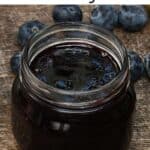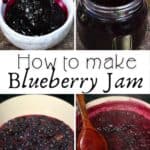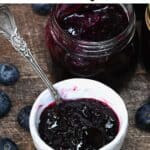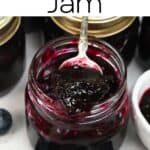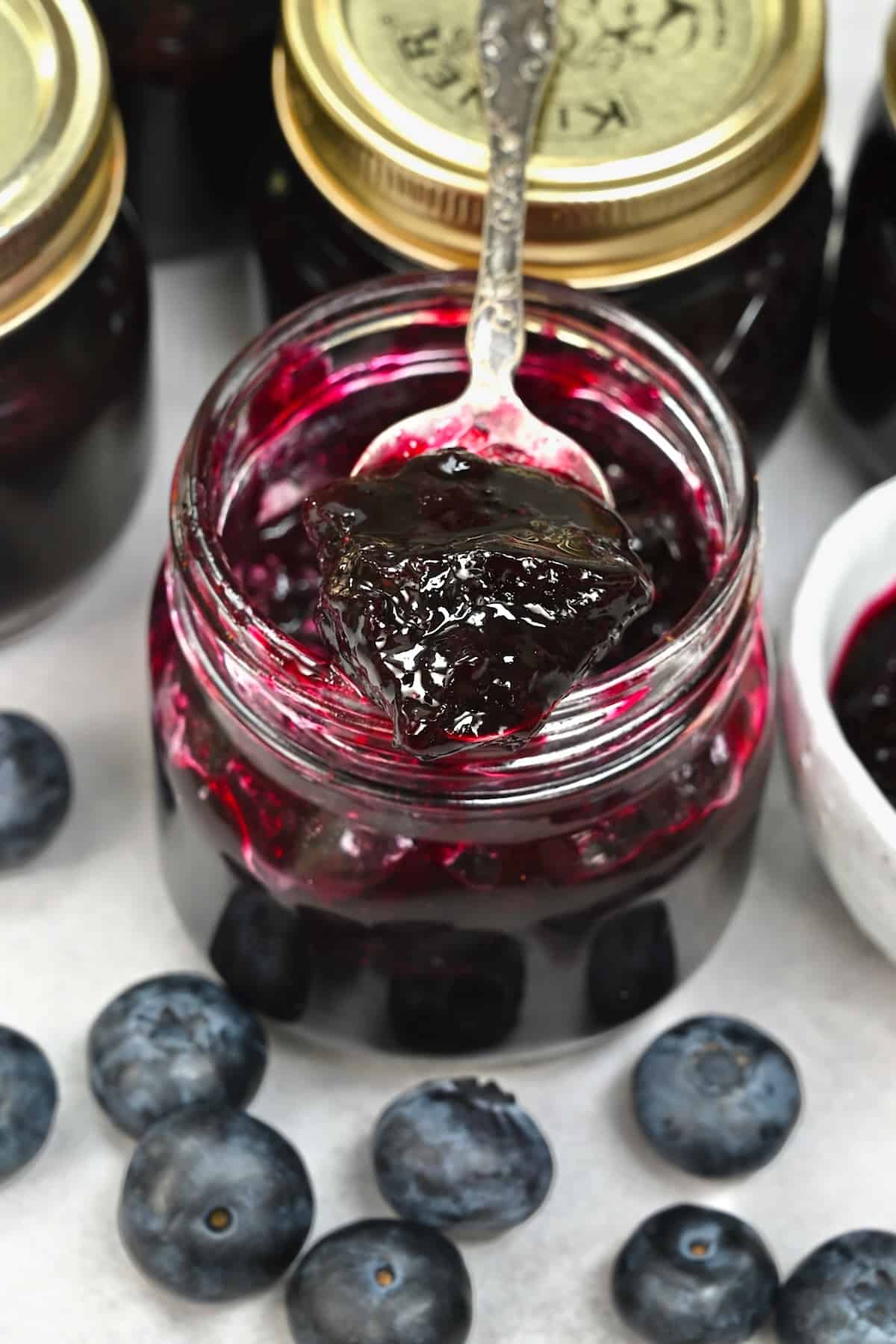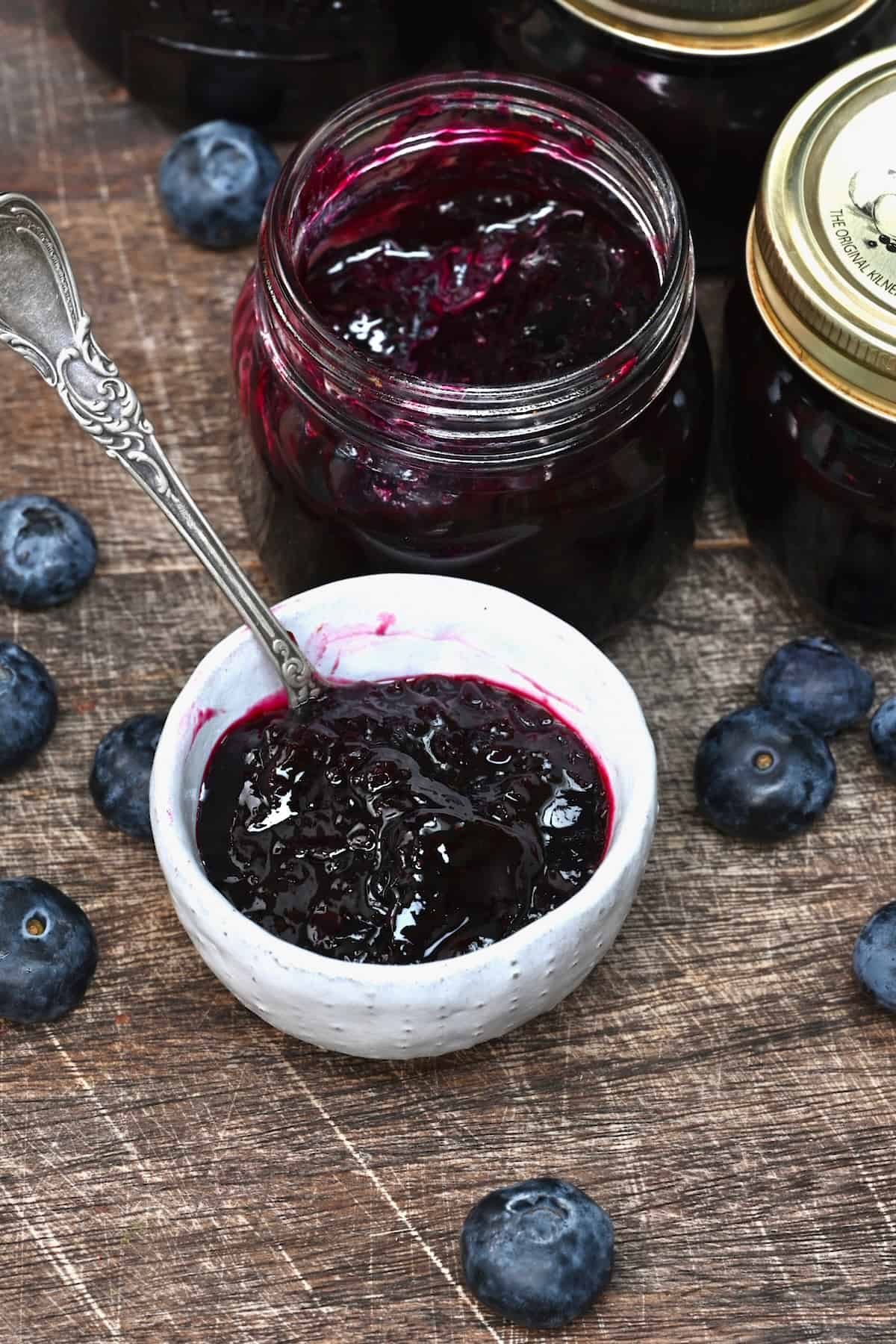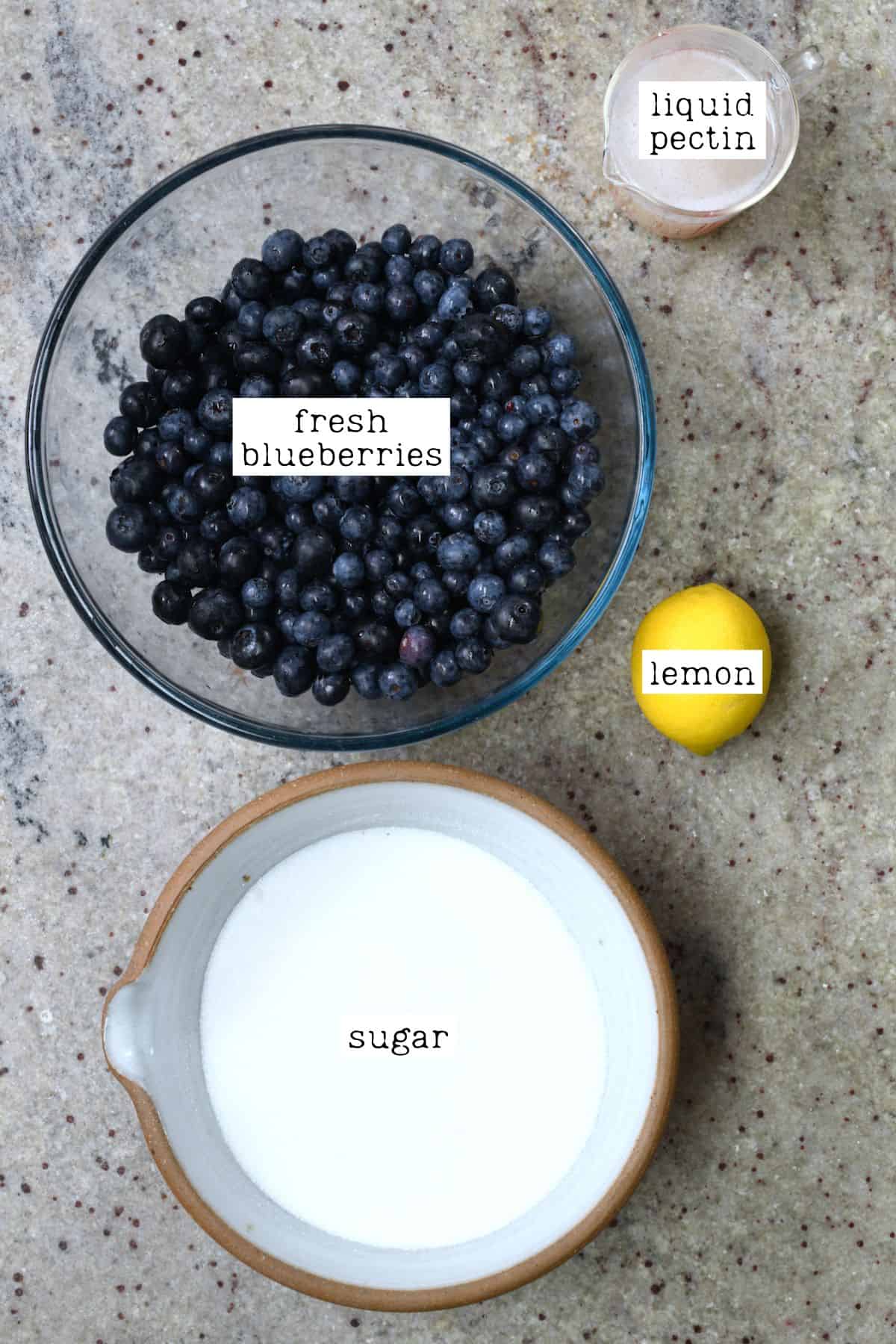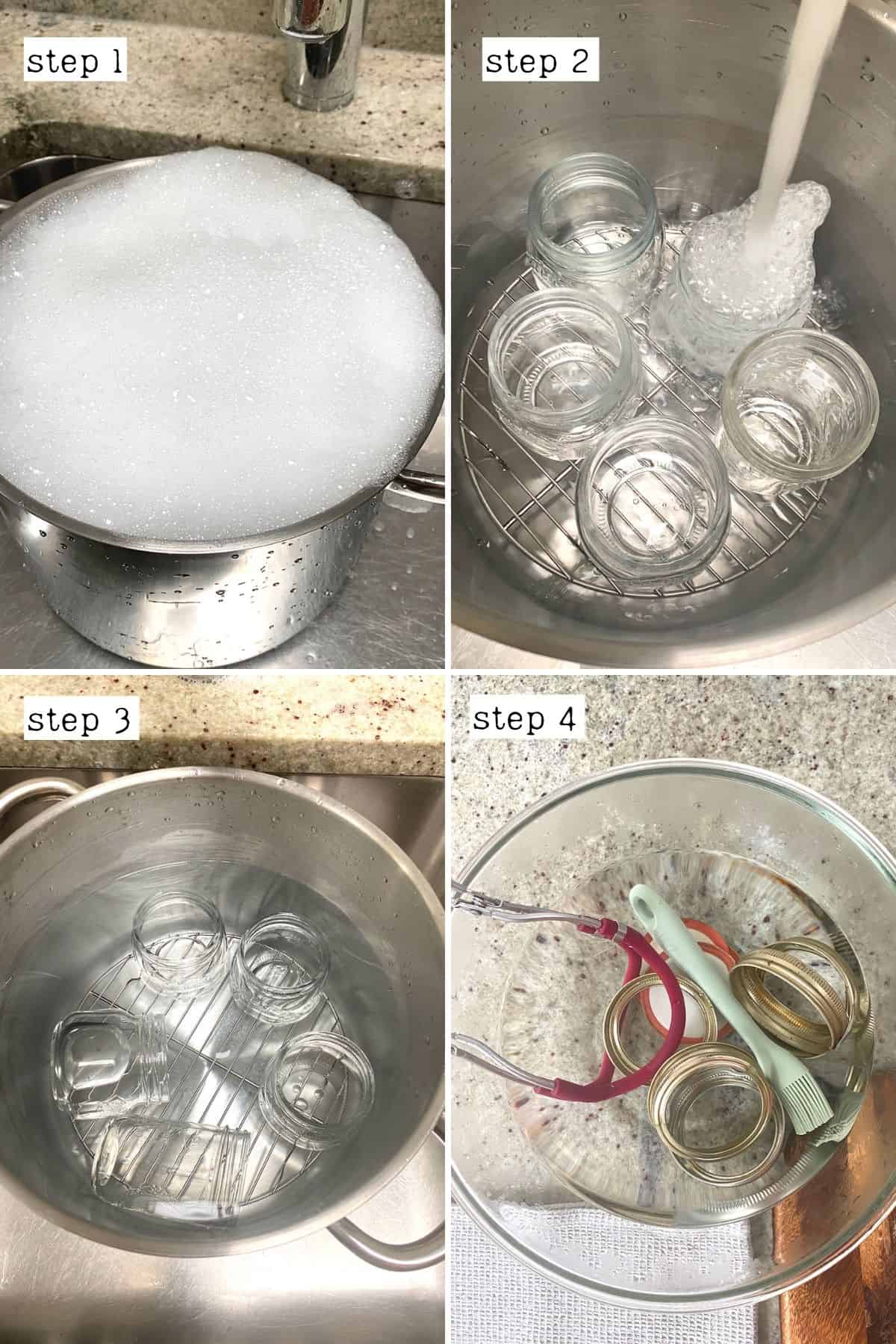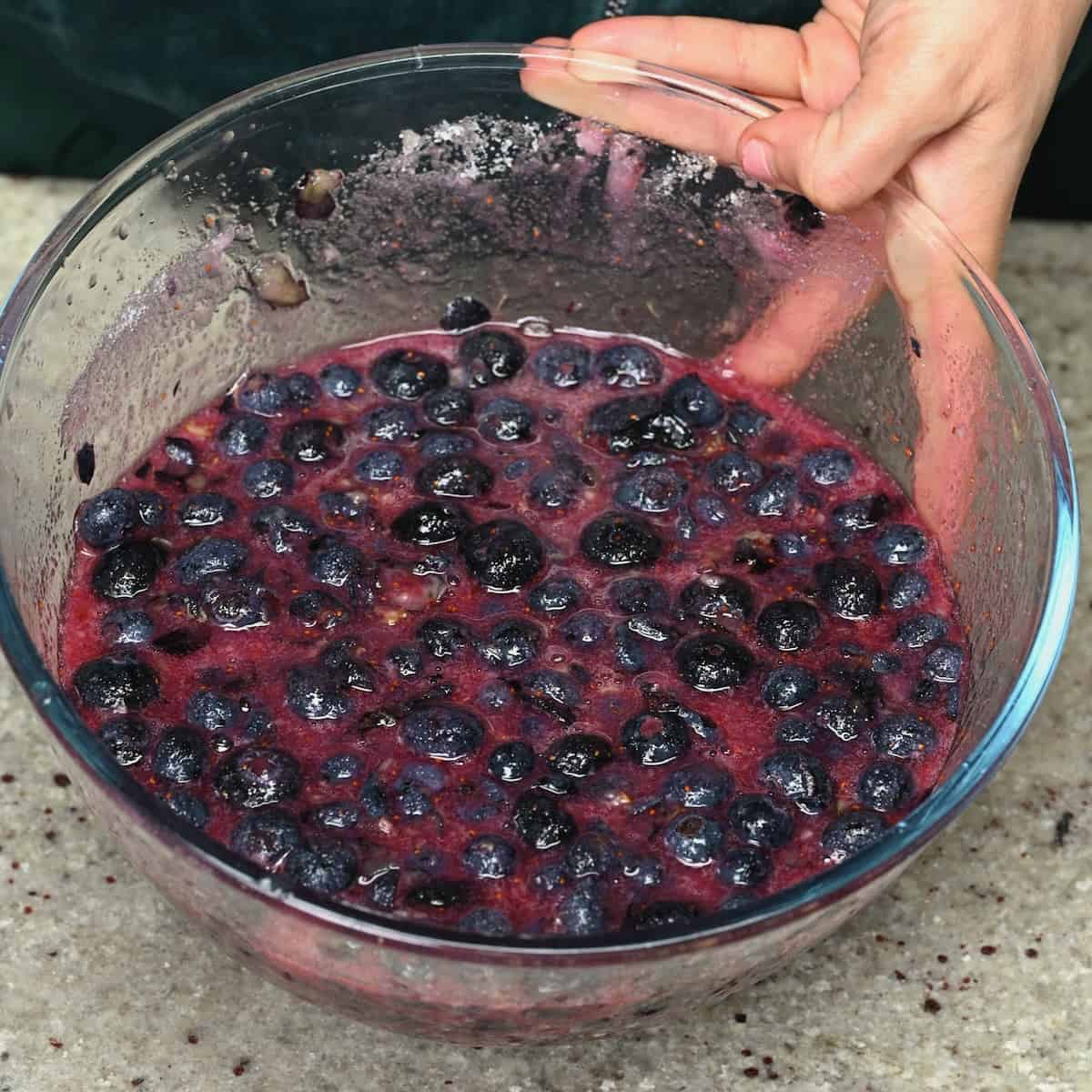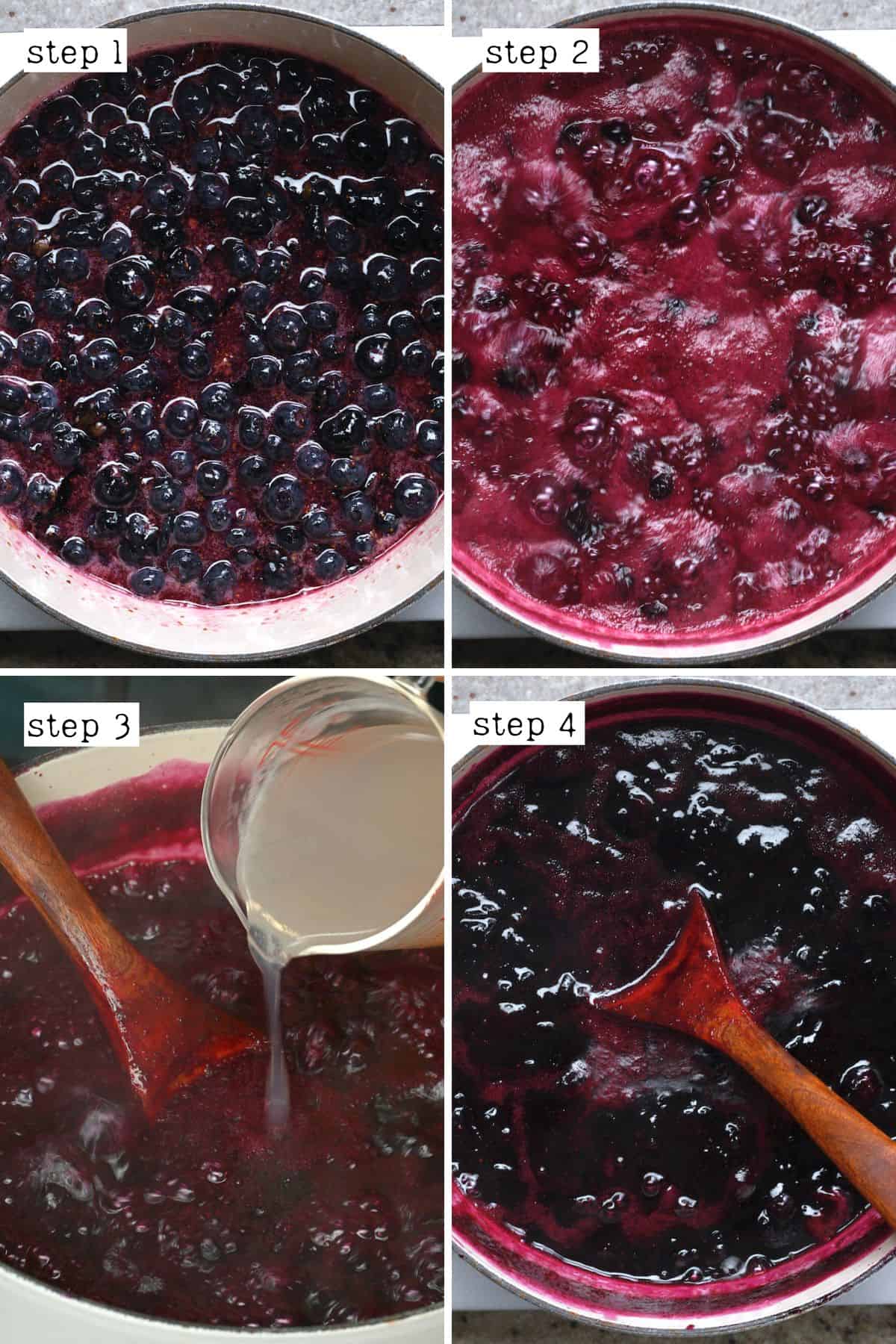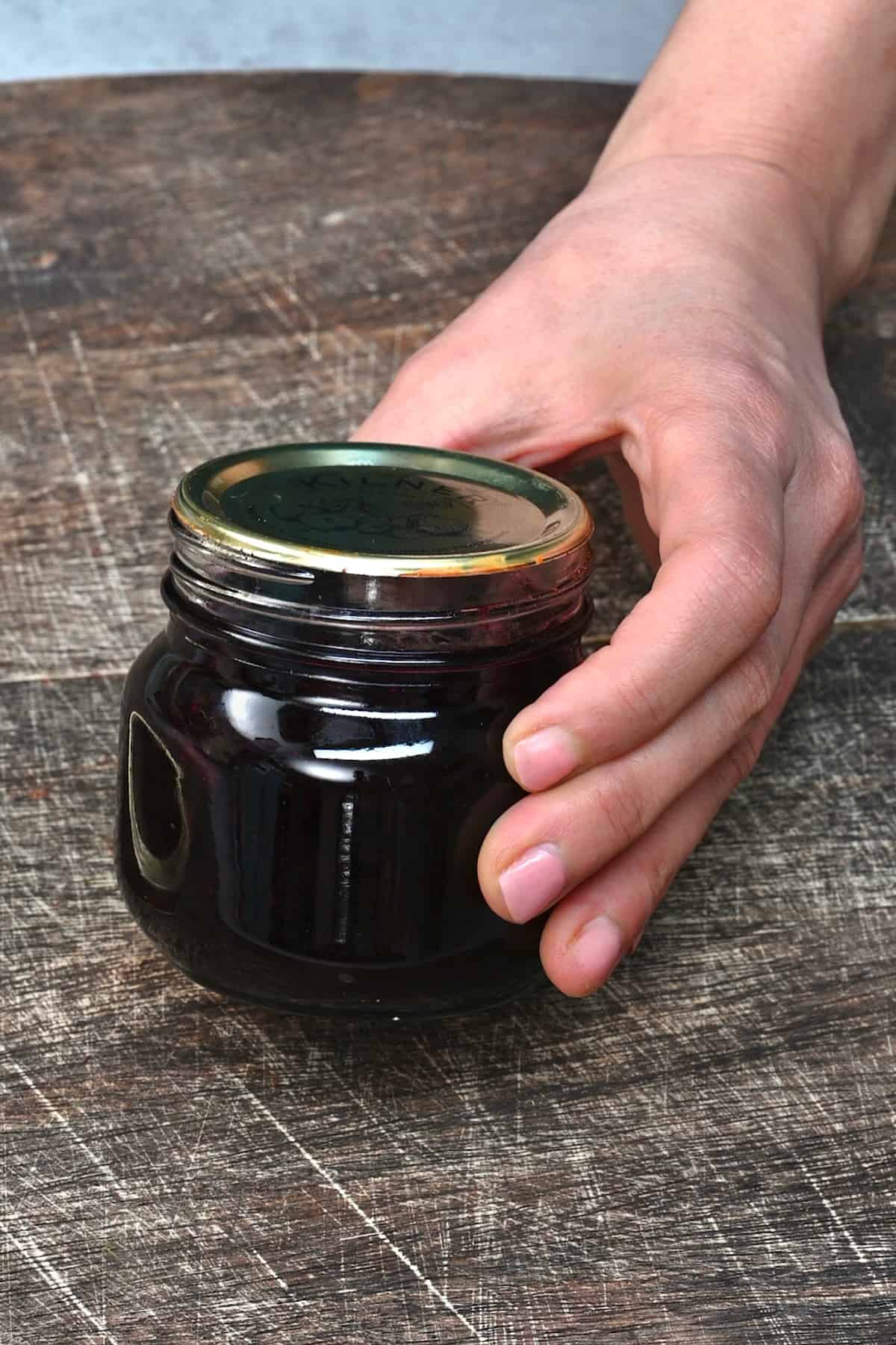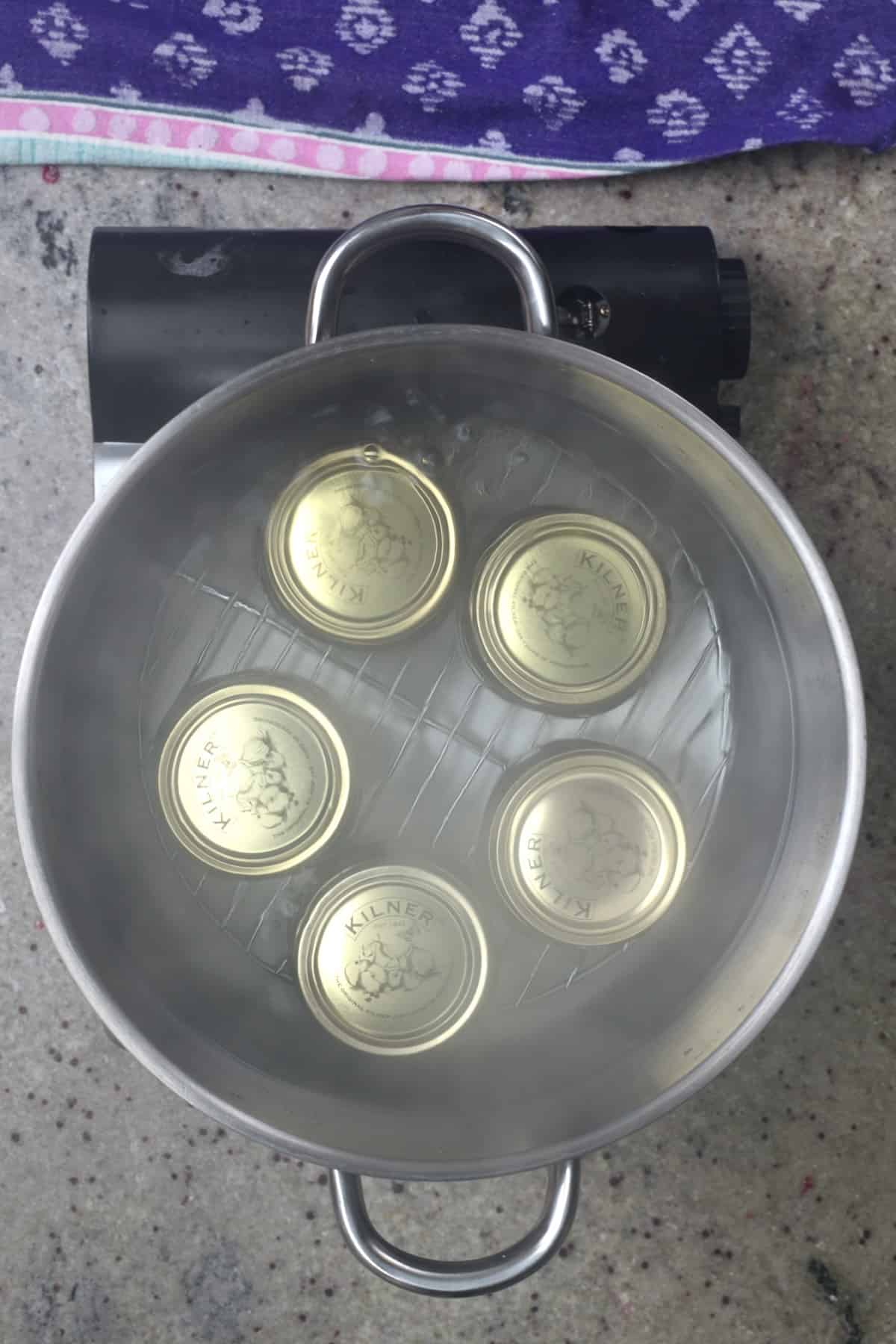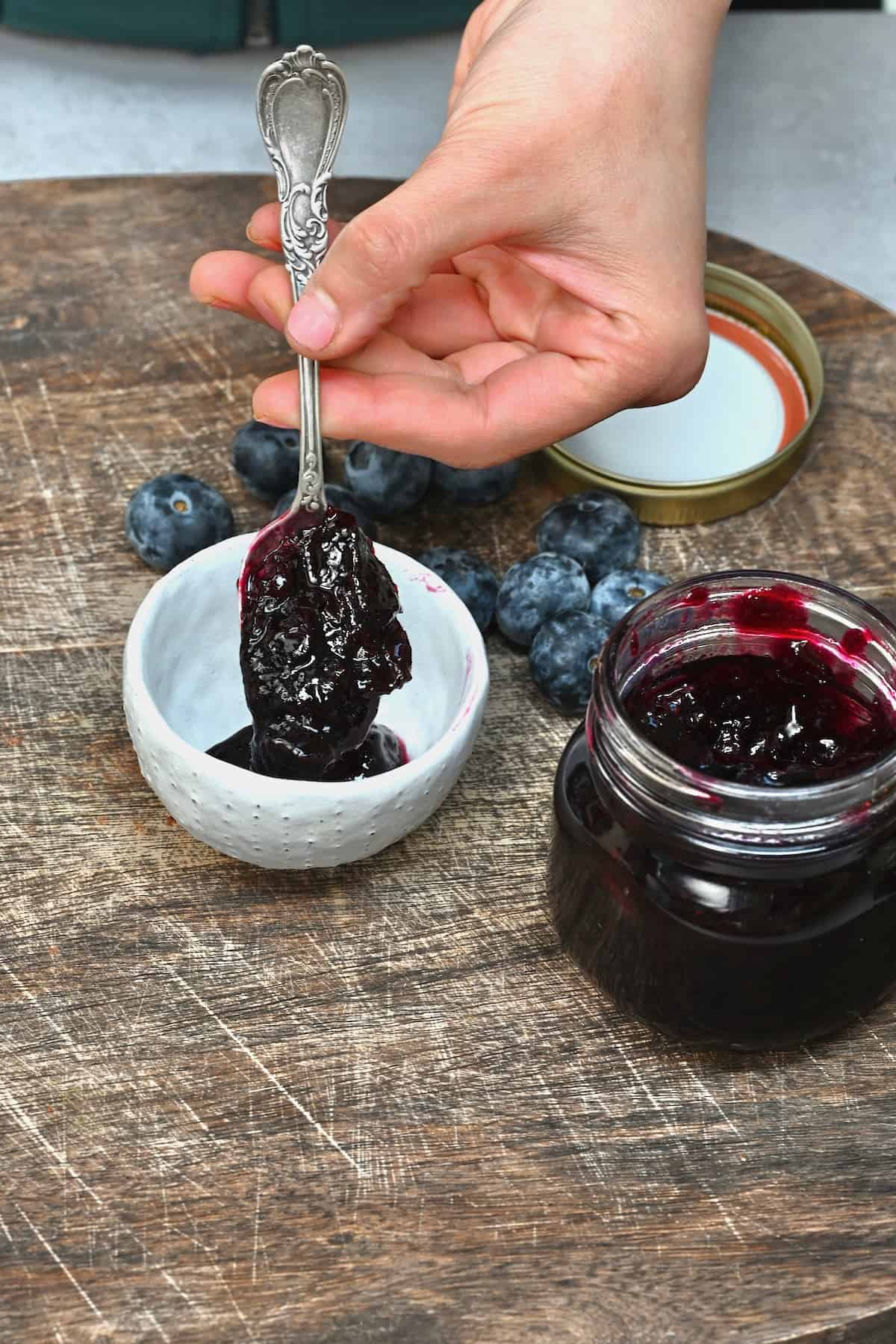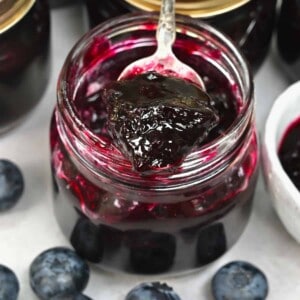Making homemade jams is one of my favorite ways to preserve and savor the flavor of summery sweet berries year-round – like strawberry jam, raspberry jam, blackberry jam, and blueberries. This easy blueberry jam recipe requires just 4 key ingredients, can be flavored several ways, and takes as little as 20 minutes to prepare with minimal effort. The homemade jam tastes so much fresher and better than grocery store versions, too. There are no unwelcome additives or artificial preservatives, and it’s made healthier by reducing the added sugar by 25% and using liquid pectin to ensure a good set. Better yet, you can store it in the fridge/freezer or learn how to can blueberry jam in a water bath to make it shelf stable for up to a year to spread, swirl, and dollop in breakfasts and desserts. Have even more juicy blueberries to use? Try blueberry bread, blueberry cobbler, or no-bake blueberry tart with earl grey, or freeze them to add to healthy blueberry smoothy.
Blueberry jam ingredients
Blueberries: It’s best to use “just ripe” or “ripe” fresh blueberries for this recipe, as overly ripe berries can become leathery on the outside and affect the texture of the jam. Frozen (thawed) blueberries work too. Sugar: Granulated white sugar will sweeten without adding extra flavor, so it is the preferred option. However, it is possible to use unrefined coconut or date sugar too. Lemon juice: You can use fresh or bottled lemon juice, which will help to balance flavor, boost the pectin content, and is a natural preservative. Add lemon zest for even more zing. Pectin: I use liquid pectin to help the jam set to the correct consistency.
Refer to the Recipe Card Notes for some of my favorite ways to add flavor to this easy blueberry jam recipe.
How to Make Blueberry Jam
Step 1: Sterilize the Jars First, it’s important to sterilize all the jars and tools used for this recipe. Wash the jars, lids, and bands in hot, soapy water, rinse them well, and leave them to drain and dry. If you’re planning to can the jam, prepare the canner now, too, by adding the trivet/rack to the bottom of the canner and filling it with enough water to submerge the cans. Step 2: Prepare the Blueberries Then, wash the blueberries well, removing any that are spoiled, have blemishes, etc. Transfer the berries to a large, deep, stainless-steel saucepan along with the sugar and lemon juice. Then use a potato masher or fork to gently crush the berries, leaving some whole if preferred. Step 3: Cook the Jam Bring the mixture to a full rolling boil over high heat, stirring constantly. Then stir in the pectin and continue to stir over a hard boil for one minute. Then, remove the blueberry jam from the heat, skim off any foam, and ladle the hot jam into hot jars, leaving about ¼ inch (0.5 cm) of headspace. Tap the jar against your kitchen surface and/or use a knife to remove any air bubbles in the jam. To make the jars hot, heat them (lids on) in the water bath canner while bringing the water to an almost boil. Alternatively, warm the jars (not lids) in an oven or dishwasher. Finally, wipe the jar rims with a clean kitchen towel. Place the lid on the jar, then screw the bands until they are fingertip-tight.
Water bath canning blueberry jam
Canning blueberry jam is simple and only adds four low-fuss steps to the recipe. Any unsealed jars can be reprocessed with new lids or transferred to the refrigerator to use within a month.
How to serve blueberry jam
As part of a cheese board, As a spread over toast, New York-style bagel, simit (Turkish bagel), scones/biscuits, a grilled cheese sandwich, etc. Within a PB&J sandwich, Dolloped over pancakes, waffles, and French toast, Thin with water to use as a sauce for cheesecake or glaze for chicken, Spoon into oatmeal or overnight oats, Stir into yogurt (optionally with fruit and homemade granola), Use as an ice cream topping, Swirl over or as a filling for muffins, cakes, cookies (including thumbprint cookies), and pastries.
Blueberry preserves also make a great gift for everyone during the holidays. Let me know in the comments how you best enjoy it!
Top tips for success
Select the best blueberries: They should be “just ripe” or “ripe,” but not overripe, with a juicy, sweet flavor. Avoid using any past their best, blemished, bruised, etc. Make sure to use sterilized jars: This is important to avoid premature spoiling. Use nonreactive tools: This includes a nonreactive saucepan (stainless steel, glass, enamel-coated will work well), spoons (silicone or wooden), etc. Avoid aluminum, copper, etc. Stir constantly: To avoid the berries scorching/sticking to the saucepan. If you have one, use a thermometer: To take the guesswork out of achieving the perfect jam, use a thermometer. It should reach 220ºF/105ºC for a good gel stage. Alternatively, test it using the spoon & plate method – test a few drops on a frozen saucer and place it in the fridge for a minute. It should wrinkle and be gel-like when pushed through with a finger. Adjust the jam consistency: If you’ve accidentally made the jam too thin or evenly overly solid, don’t worry. Just reheat the mixture and either add more pectin (to thicken it) or some water and lemon juice (to thin it).
More simple DIYs
Simple Fig Jam Rhubarb Jam Apricot Jam (No Pectin Required) Pumpkin preserves
If you try this blueberry jam recipe, let me know how it goes in the comments below. I’d appreciate a recipe card rating and would love to see your recipe recreations – tag me on Instagram @Alphafoodie!
